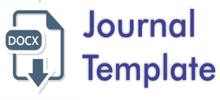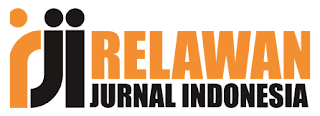Author Guidelines
ANALOGY: Jurnal Arsitektur, Lingkungan Biaan & Planonogi provides a place for academics, researchers, and practitioners to publish scientific articles. All texts sent to the ANALOGI editor are accepted in Indonesian and English. Make sure your paper is prepared using the ANALOGI Template. A maximum of 6-15 pages can be made (final edits)
1.1 General Guidelines
The manuscript is typed using the MS. Word program (Candara font 9 pt), in a two-column layout, mirror margins; top 3 cm, inside 3 cm, bottom 3 cm, outside 2 cm. Header. A4 paper size (21x29.7cm), The length of the essay must be at least 3,000 words and no more than 6,000 words, including tables and figures and each page of the manuscript is numbered sequentially. Illustrations of research results data in the form of images can be maps, photos, flowcharts, nerves, or charts. Figures or tables can be placed in text boxes placed at the top or bottom of the page. The data in the table is arranged logically so that the information conveyed can be understood correctly. Tables are numbered sequentially with the title and table number above the table. Equations must be numbered in brackets. Equations must be prepared using equations (not in image format). The equation number must be placed on the right side.
Manuscript submission is done online through the ANALOGI website by registering first. The website address is https://ojs.umada.ac.id/index.php/analogi/index. If you have difficulty uploading your manuscript online, you can contact the ANALOGI Editor via email: analogi@umada.ac.id
1.2 Manuscript Composition
The introduction must clearly state the purpose of the article. It should include key references to appropriate work but should not be a historical or literature review. The contents of the article include Introduction, Methods (for research-based articles), Contents, Discussion, Conclusions, Suggestions (science of architecture) and Bibliography. The contents of non-research articles can include several sub-chapters with free titles depending on the research.
Title. Describe the main content of the text briefly and clearly in a maximum of 15 words, written in Indonesian for Indonesian manuscripts and written in English for English manuscripts.
Full name of the author. Written in full (not abbreviated) and without a title.
Full address of the author. Full name of the institution, author's origin, and mailing address, postal code, and country of the institution city
Abstract. The abstract is written in Indonesian and must be a summary of the article with 1 line spacing. The abstract must consist of one paragraph containing no more than 200 words. Keywords must be carefully selected to facilitate reader searches and can be written up to five words and separated by semicolons. The abstract must stand alone, meaning there are no citations in the abstract. Think of it as an advertisement for your article. The abstract should tell potential readers what you did and highlight the main findings. Avoid using technical jargon and uncommon abbreviations. You must be accurate, concise, clear, and specific. Use words that reflect the exact meaning. The abstract must be precise and honest, summarizing the important points of the article. use up to five keywords, each separated by a ";" symbol.
Introduction. In the Introduction, the Author should state the purpose of the work at the end of the introduction section. Before the purpose, the Author should provide adequate background, and a very brief literature survey to record existing solutions/methods, to show which is the best of previous research, to point out the main limitations of previous research, to indicate what needs to be done. You hope to achieve (to overcome the limitations), and to show the scientific merit or novelty of the article. Avoid detailed literature surveys or summaries of results. The introduction should clearly state the purpose of the article. It should include key references to relevant work but should not be a historical or literature review
This section is supported by a literature review used to support the service concept. Authors are required to present a preliminary literature review (references to journal articles and conference proceedings) and an up-to-date (references published in the last ten years). The literature review is not limited to theory but also empirical evidence. Enrich this introductory section with efforts that have been made by others. This article is the result of downstream research service; It can be the result of your research or other researchers.
Methods. The methods section explains the rationale for the specific procedures or techniques used to identify, select, and analyze the information used to understand the research problem, allowing the reader to critically evaluate the validity and reliability of the study as a whole.
Results and Discussion. A loosely structured discussion needs to make a clear argument, and it is helpful to use subsections to structure this argument. You should draw on your own results, not just other literature. The discussion is NOT a literature review, but your work should be the center of the argument. The body is the body of the article, consisting of subheadings that represent the discussion of the article. Results should be clear and concise. The results should summarize the (scientific) findings rather than provide the data in great detail. The discussion should explore the significance of the work, not repeat it. A combined Results and Discussion section is often appropriate. Avoid extensive citations and discussions of published literature.
The discussion is the most important part of your article. This is where you get the chance to sell your data. Make the discussion relevant to the results, but do not repeat the results. It should often begin with a brief summary of the main scientific findings (not the experimental results). The following components should be included in the discussion: How do your results relate to the initial question or purpose outlined in the Introduction (what)? Do you provide a scientific interpretation for each result or finding you present (why)? Are your results consistent with what has been reported by other investigators (what else)?
Conclusion. The Conclusion should address the purpose of the study. Tell how your work advances the field from the current state of knowledge. Without a clear Conclusion, reviewers and readers will have difficulty assessing the work, and whether or not it is worthy of publication in the journal. Do not repeat the Abstract, or simply list the results of an experiment. Provide a clear scientific justification for your work, and indicate possible applications and extensions. You should also suggest future experiments and/or indicate ongoing experiments.
References. If explanatory notes and references are relevant, they should be indicated in the text with superscript numbers like this[1]. A complete list of all notes and references should be provided at the end of the article. Journal references should be written in IEEE format. Please use referencing software such as Mendeley, Zotero, etc. to facilitate citation work. Journal references should include all authors' names and initials, year of publication, title of article, full title of journal, volume number and first and last page numbers[2]. References to books should include their edition, and all editors and all relevant authors, publisher and place of publication[3]. It is the author's responsibility to check the accuracy of references. Example:
[1] S. Hasan dan T. Corresponding, “The Contextual Issues in the Islamic Architecture of Bengal Mosques,”GJAT, vol. 3, tidak. 1, hlm. 41–48, 2013.
[2] S. Omer, “Rasionalisasi Kebolehan Dekorasi Masjid,”J.Islam. Arsitek., vol. 4, tidak. 1, hlm. 14–26, 2016.
[3] TH Karyono,Green Architecture: Pengantar Pemahaman Arsitektur Hijau di Indonesia. Jakarta: Rajawali Press, 2010.






















